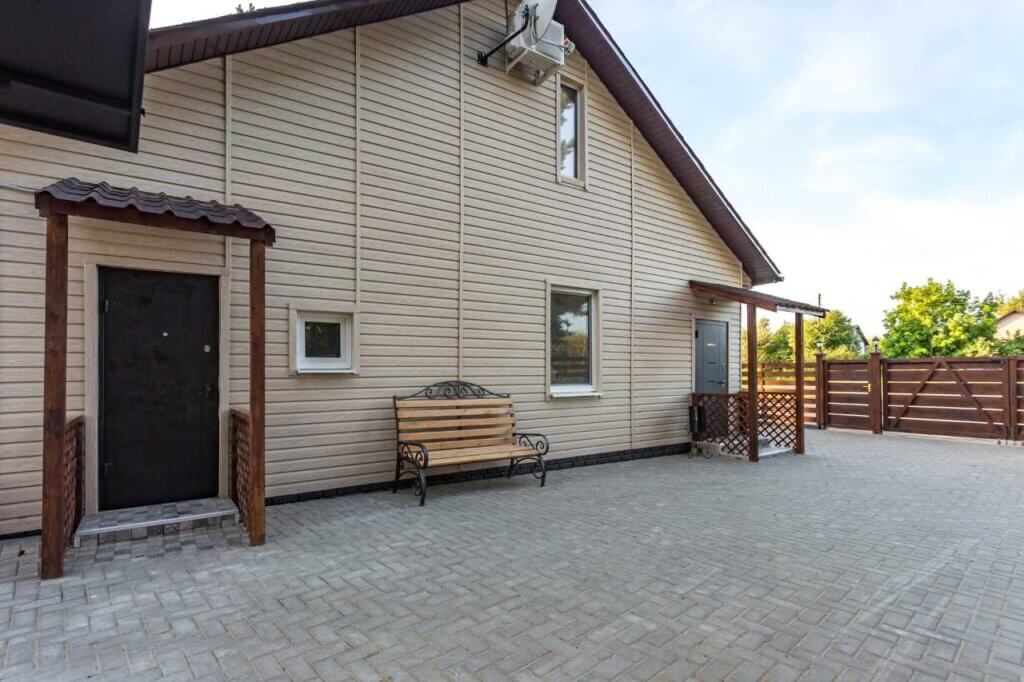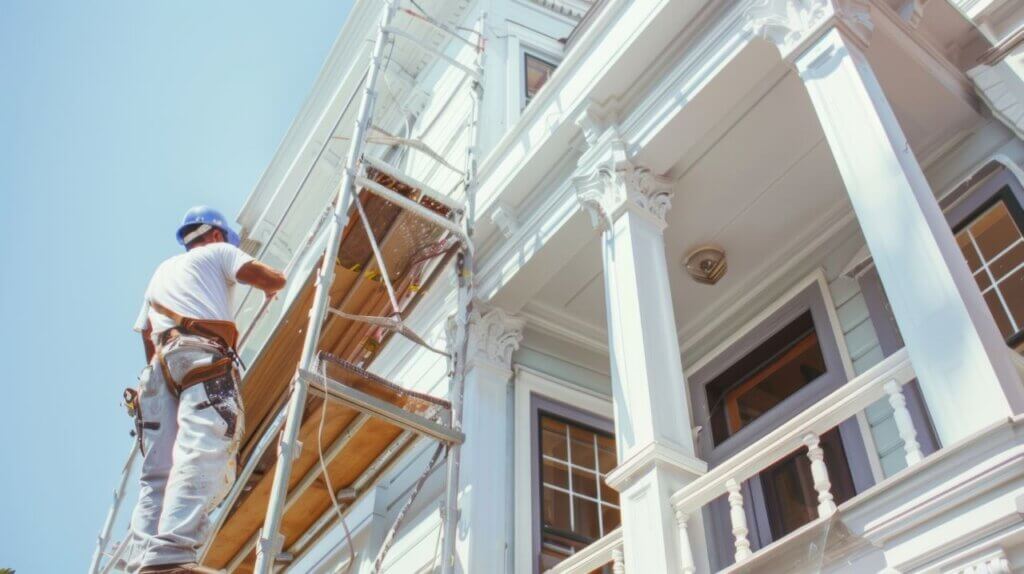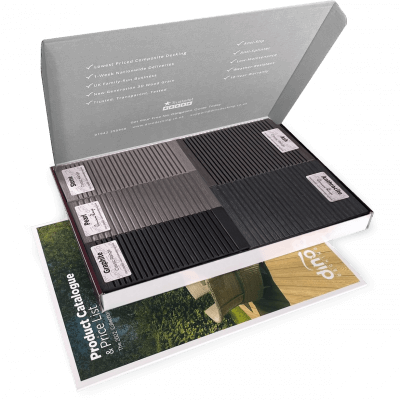5 Composite Decking Lighting Ideas
Our composite decking looks great in any setting, but you can really make your outdoor spaces shine with our decking
Products in Stock
Lowest Prices
Express Delivery
10-Year Warranty
Early April Sale. Up To 15% Off.

One of the most important factors to consider when choosing cladding is the material, in particular how the material holds up to regular wear-and-tear. After all, the cladding of your building is not only a critical component of its aesthetic appeal but also its first line of defence against the elements.
So whether you’ve just installed new cladding or want to extend the life of your existing façade, proper maintenance is key to preserving its integrity and appearance for years to come. In this post, we’ll share expert tips on how to maintain cladding for longevity, so you can protect your investment and keep your building looking its best.
Before diving into the specifics of cladding maintenance, let’s take a moment to understand why it matters.
Your building’s cladding is constantly exposed to a barrage of weather conditions, from driving rain and high winds to scorching sun and freezing temperatures. Over time, these elements can take a toll on the materials, leading to deterioration, warping, or even structural damage. Regular maintenance helps to identify and address any issues before they escalate, ensuring your cladding continues to provide effective protection.
Neglecting cladding maintenance can lead to more than just cosmetic issues. When moisture penetrates the façade due to cracks, gaps, or other damage, it can cause rot, mould growth, and corrosion of the underlying structure. This not only compromises the integrity of your building but can also create health hazards for occupants. By keeping your cladding in top condition, you can prevent costly structural repairs down the line.
Let’s face it – the exterior of your building is the first thing people notice. Whether you’re running a business, managing a residential complex, or simply taking pride in your home, maintaining the appearance of your cladding is essential for creating a positive impression. Regular cleaning and upkeep will help to prevent staining, fading, and other unsightly damage, keeping your building looking fresh and inviting.
Now that we’ve established the importance of cladding maintenance let’s explore some expert tips for keeping your façade in top shape.
One of the simplest and most effective ways to maintain your cladding is through regular cleaning. Depending on the material and location of your building, this may involve power washing, scrubbing with a soft-bristled brush, or using specialised cleaning solutions. Be sure to follow the manufacturer’s guidelines for your specific cladding type to avoid causing damage.
Make a habit of regularly inspecting your cladding for signs of damage, such as cracks, warping, or loosened fasteners. Catching these issues early allows for prompt repairs, preventing moisture intrusion and further deterioration. If you’re not comfortable assessing the condition of your cladding yourself, consider hiring a professional to conduct an annual inspection.
Prolonged exposure to ultraviolet (UV) radiation can cause certain cladding materials, particularly timber and some plastics, to fade, become brittle, or even crack. To minimise UV damage, consider applying a UV-resistant coating or finish to your cladding. This can help to extend its lifespan and maintain its original colour and texture.
Moisture is one of the biggest threats to cladding longevity. To prevent water from pooling on or behind the façade, ensure that your building has adequate drainage systems in place. This may include properly functioning gutters and downspouts, as well as clear channels for water to escape from behind the cladding. Regular maintenance of these systems is crucial to prevent moisture-related damage.
Many cladding materials, such as timber and metal, rely on protective coatings to resist weathering and corrosion. Over time, these coatings can wear away, leaving the underlying material vulnerable to damage. To maintain the integrity of your cladding, be sure to reapply these coatings as needed, following the manufacturer’s recommended schedule and application methods.
While cladding is designed to withstand the elements, it can be susceptible to damage from impacts, such as hail, falling branches, or even errant soccer balls. To minimise the risk of impact damage, consider installing physical barriers or screens in high-risk areas, and be mindful of landscaping choices that could pose a threat to your façade.
It’s not just the cladding itself that requires maintenance – the surrounding areas play a role in its longevity as well. Regularly trim back any vegetation that may be encroaching on the façade, as this can trap moisture and cause damage. Keep walkways and driveways near the building clean and free of debris, as this can also contribute to staining or abrasion of the cladding.

While the tips above apply to most cladding types, there are some material-specific considerations to keep in mind.
Timber cladding requires regular sealing or painting to protect against moisture and UV damage. Be sure to address any signs of rot or insect infestation promptly to prevent further deterioration.
Composite cladding, such as our best-selling composite cladding at Dino Decking, offers excellent durability and minimal maintenance requirements. However, it’s still important to clean the façade regularly and inspect for any signs of damage or fading.
Metal cladding, such as aluminium or steel, is prone to corrosion if the protective coating is compromised. Regular inspections and touch-ups can help to extend the life of the façade and prevent unsightly rust stains.
Even with the best intentions, there are some common pitfalls to avoid when maintaining your cladding.
Different cladding materials require specific cleaning methods and products. Using the wrong solutions or abrasive tools can cause damage to the façade, stripping away protective coatings or even etching the surface. Always consult the manufacturer’s guidelines or a professional before attempting to clean your cladding.
It’s easy to take a “set it and forget it” approach to cladding, but neglecting regular inspections can allow small issues to escalate into major problems. Make a point of assessing the condition of your façade at least once a year, if not more frequently, to catch any potential concerns early on.
Maintaining the cladding on your building is a critical aspect of protecting your investment and ensuring its long-term performance. If you follow these expert tips and stay vigilant against potential issues, you can extend the life of your façade and keep your building looking its best for years to come!

Our sample pack contains a sample piece of each colour currently available. Order your free sample pack today to compare the colours and get a true feeling of the Dino Decking range!
Our composite decking looks great in any setting, but you can really make your outdoor spaces shine with our decking
If the idea of having rats under your decking makes you shiver, don’t worry. We’ll let you know the signs
Business hours
Monday: 09:00 – 17:30
Tuesday: 09:00 – 17:30
Wednesday: 09:00 – 17:30
Thursday: 09:00 – 17:30
Friday: 09:00 – 17:30
Saturday: Closed
Sunday: Closed
Contact us
01942 355968
support@dino.co.uk
Collection Address: Unit 1 Wetheral Close Hindley Ind Estate Wigan Greater Manchester North West WN2 4HS
Pages
Products
Testing
Copyright 2025 Dino Decking Ltd All Rights Reserved.
VAT Number: GB296097848.
Company Number: 10837233.